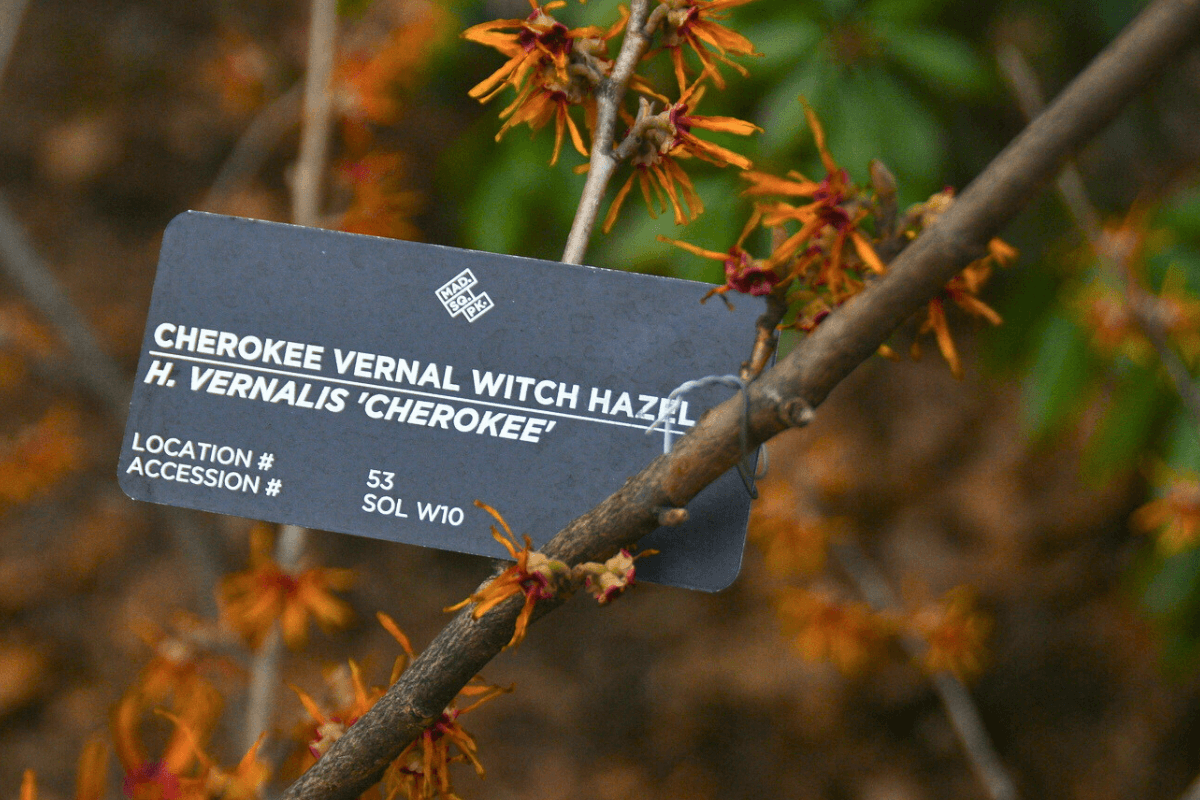This site uses cookies – Learn more.
Wonderful Witch Hazels
Wonderful Witch Hazels

You may first notice the subtle beauty of witch hazels (Hamamelis spp.) in passing as their thin, ribbon-like flower petals provide bright bursts of color among the shades of brown, green, gray, and white that dominate the winter landscape. These fragrant flowers offer supplies of nectar to the late-season pollinators of fall as well as the early pollinators heralding spring. Today, extracts from witch hazel leaves, twigs, and bark are most widely known for their use in cosmetic skincare products, but the various medicinal properties of this plant have long been understood & used by the indigenous peoples of North America to treat numerous conditions. The flexibility of its branches may have even made it a good source for bow wood.
The genus Hamamelis contains about five species, all of which can be found in Madison Square Park’s Nationally Accredited collection. All five possess a multi-stem form typically found in forest understories, and at maturity, their heights can range from 15 to 30 feet. Hamamelis virginiana, commonly known as American witch hazel, is native to eastern North America and flowers in late fall, the earliest of its fellows. Hamamelis vernalis is commonly called Ozark witch hazel because it is native to the Ozark plateau. This region spans thousands of square miles across Missouri, Arkansas, Oklahoma, and Kansas. This witch hazel blooms from January through April. Hamamelis ovalis, or big-leaf witch hazel, is native to southern Mississippi and blooms from late December to early February. This species was only just discovered in 2004, nearly 100 years after H. vernalis. Hamamelis japonica, also known as Japanese witch hazel, is native to Japan and blooms from January to March like Hamamelis mollis, or Chinese witch hazel. H. mollis is native to China, quite showy, and the most fragrant of the species, but the least hardy of its peers.
The majority of Madison Square Park’s collection of over 70 varieties of witch hazels are Hamamelis × intermedia or hybrid witch hazel. These plants are a cross between H. japonica and H. mollis, exhibiting the best traits of their parent species, and tend to flower from early February to late March. To learn more about the collection, click here. Now is the perfect time to tour it at your leisure using this map, but you can also stay tuned for the witch hazel edition of the park’s lunchtime Botanical Collection Tours.
Photo: Mark Gallucci



